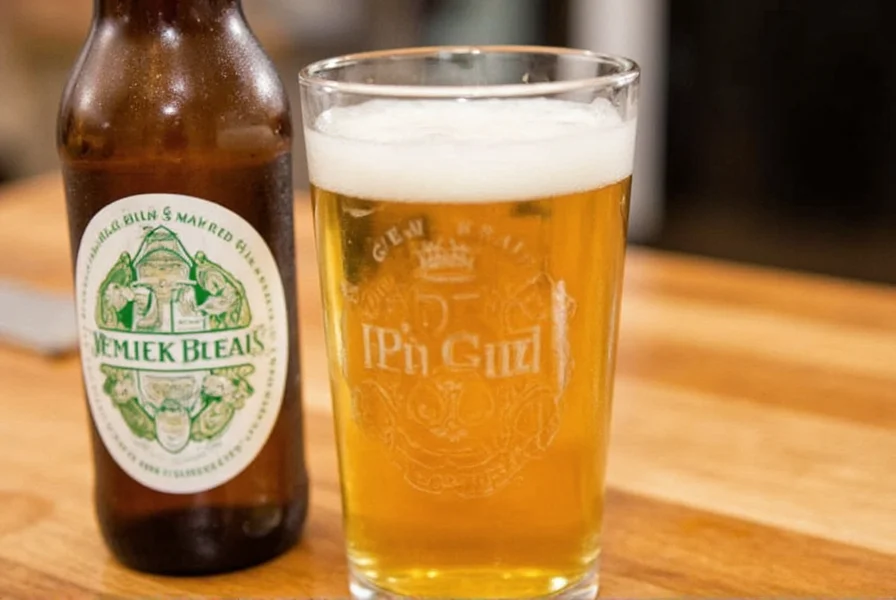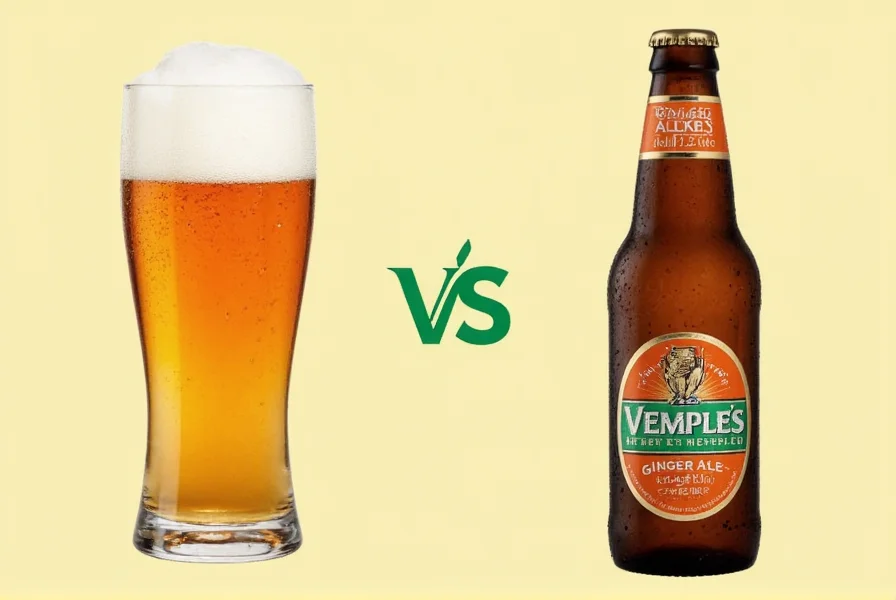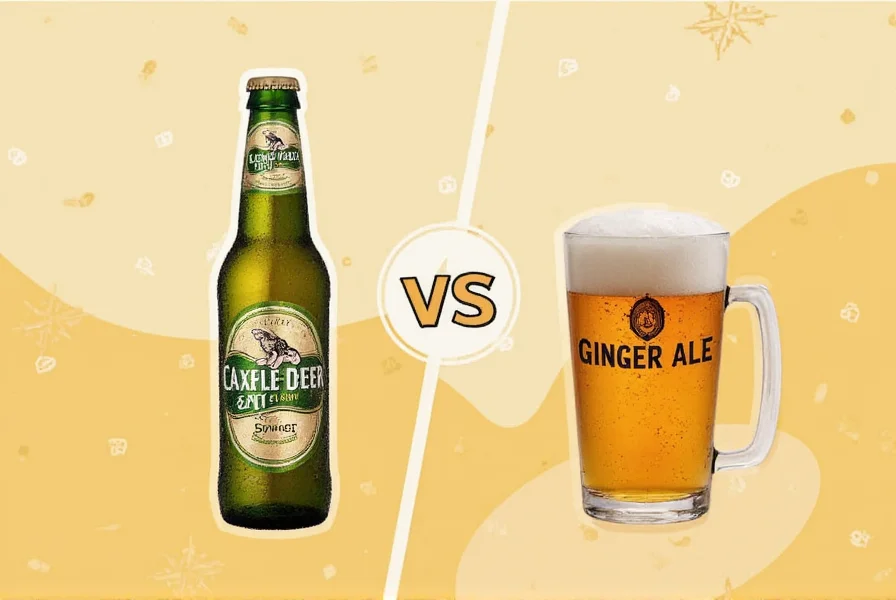The fundamental distinction between ginger ale and ginger beer lies in their production methods and resulting characteristics. While both beverages feature ginger as their primary flavoring agent, their historical origins, fermentation processes, flavor profiles, and modern interpretations create significant differences that matter for culinary uses, cocktail crafting, and personal preference.
Historical Origins and Evolution
Ginger beer originated in 18th century England as a fermented beverage made from ginger, sugar, water, and a symbiotic culture of yeast and bacteria known as the "ginger beer plant." This traditional preparation method produced a naturally carbonated drink with noticeable alcohol content. In contrast, ginger ale emerged later in Canada during the mid-19th century as a non-alcoholic alternative, created by simply mixing ginger flavoring with carbonated water.
Understanding this historical context explains why modern interpretations vary significantly. Traditional ginger beer remains popular among craft beverage enthusiasts who appreciate its complex fermentation profile, while commercial ginger ale dominates supermarket shelves as a mild mixer.
Production Methods Compared
The production process creates the most significant differences between these beverages:
| Characteristic | Ginger Beer | Ginger Ale |
|---|---|---|
| Traditional Production | Fermented with yeast ("ginger beer plant") | Carbonated water with ginger flavoring |
| Modern Commercial Production | Often force-carbonated without fermentation (non-alcoholic versions) | Always non-alcoholic, flavor-infused carbonation |
| Alcohol Content | Traditional: 0.5%-11% ABV; Commercial: Usually 0% ABV | Always 0% ABV |
| Fermentation Time | 3-14 days for traditional versions | No fermentation required |
| Carbonation Source | Natural (from fermentation) or forced | Always forced carbonation |
Flavor Profiles and Ingredients
Ginger beer typically delivers a more robust, spicy, and complex ginger flavor with noticeable heat. Traditional versions often have subtle sour notes from fermentation. Commercial ginger beers maintain this stronger profile through higher ginger extract concentrations.
Ginger ale generally offers a milder, sweeter profile with subtle ginger notes. There are two main styles:
- Golden-style (like Vernors): Darker, stronger ginger flavor from caramelized sugar and extended aging
- Dry-style (like Canada Dry): Lighter color, milder flavor, higher carbonation
The difference between ginger ale and ginger beer taste becomes particularly apparent when sampling them side by side—ginger beer's pronounced ginger bite contrasts with ginger ale's gentle spice.

Alcohol Content Clarified
One of the most common points of confusion is whether ginger beer contains alcohol. Traditional homemade ginger beer does contain alcohol due to fermentation, typically ranging from 0.5% to 11% ABV depending on fermentation time. However, nearly all commercially available ginger beers in supermarkets today are non-alcoholic (<0.5% ABV), having undergone pasteurization to stop fermentation.
Ginger ale, by definition, contains no alcohol as it's never fermented. When evaluating ginger beer vs ginger ale alcohol content for culinary purposes, always check the label—most modern "ginger beers" are technically non-alcoholic beverages despite their name.
Culinary and Mixology Applications
The distinction between ginger ale vs ginger beer becomes crucial when selecting mixers for cocktails:
- Ginger beer shines in Moscow Mules and Dark 'n' Stormys, where its bold flavor stands up to strong spirits like vodka and rum
- Ginger ale works better in lighter cocktails like Whiskey Highballs or as a stomach-soothing remedy
Chefs often prefer ginger beer for marinades and glazes due to its stronger ginger presence, while ginger ale's mild sweetness complements fruit-based desserts. Understanding what is the difference between ginger ale and ginger beer helps home bartenders and cooks make better ingredient choices.
Popular Brands Comparison
Not all ginger beverages are created equal. Here's how leading brands differentiate themselves:
- Ginger Beer Brands: Fever-Tree (strong, spicy), Bundaberg (Australian, moderately spicy), Q Mixers (craft-style), Reed's (very strong, authentic)
- Ginger Ale Brands: Canada Dry (classic dry-style), Schweppes (mild dry-style), Vernors (golden-style, Michigan favorite), Blenheim (hot ginger ale, almost beer-like)
When selecting between ginger beer for moscow mule preparations versus standard ginger ale, bartenders typically choose stronger ginger beers like Fever-Tree to ensure the ginger flavor isn't overwhelmed by spirits.

When to Choose Which Beverage
Selecting between these beverages depends on your specific needs:
- Choose ginger beer when you want pronounced ginger flavor, spicier notes, or authentic Moscow Mule experience
- Choose ginger ale for mild ginger flavor, soothing upset stomach, or when mixing with delicate spirits
- For cooking, strong ginger beer works better in savory applications while golden ginger ale complements sweet dishes
- When seeking probiotic benefits, look for raw, unpasteurized ginger beer (check alcohol content)
Understanding the difference between ginger ale and ginger beer alcohol content matters if you're avoiding alcohol completely—always verify labels as some craft ginger beers maintain slight fermentation.
Common Misconceptions
Several myths persist about these beverages:
- Misconception: All ginger beer contains alcohol
Reality: Most commercial ginger beers are non-alcoholic - Misconception: Ginger ale and ginger beer are interchangeable
Reality: Their flavor intensity differs significantly, affecting cocktail balance - Misconception: "Dry" ginger ale means less sugar
Reality: "Dry" refers to flavor profile, not sugar content
These clarifications help consumers make informed choices based on actual product characteristics rather than marketing terms.
FAQ
Is ginger beer actually beer?
No, despite its name, modern commercial ginger beer is not technically beer. Traditional ginger beer was fermented and contained alcohol, but most contemporary versions are non-alcoholic carbonated beverages. The name reflects its historical production method rather than its current classification.
Can you get drunk from ginger beer?
Traditional homemade ginger beer with extended fermentation (7+ days) can reach 5-11% ABV and potentially cause intoxication. However, commercially available ginger beer in supermarkets typically contains less than 0.5% ABV and cannot get you drunk. Always check the alcohol content on the label if this is a concern.
Why is ginger beer spicier than ginger ale?
Ginger beer uses more ginger root and often includes additional spices in higher concentrations. Traditional ginger beer's fermentation process also creates complex flavor compounds that enhance the perception of spiciness. Commercial ginger beers maintain this stronger profile through higher ginger extract concentrations compared to the milder ginger flavoring used in ginger ale.
Which is healthier, ginger ale or ginger beer?
Traditional fermented ginger beer contains probiotics from the fermentation process and may offer digestive benefits. However, most commercial versions of both beverages have similar sugar content (10-15g per 8oz). Craft ginger beers often use less sugar and more real ginger, potentially making them a better choice for those seeking ginger's natural benefits without excessive sweeteners.
Can I substitute ginger ale for ginger beer in recipes?
You can substitute them, but the results will differ significantly. Ginger beer's stronger flavor works better in savory applications and robust cocktails, while ginger ale's mild sweetness suits delicate dishes and lighter drinks. If substituting ginger ale for ginger beer, consider adding fresh grated ginger to boost the ginger flavor. For non-alcoholic substitutions, choose a strong craft ginger beer alternative.











 浙公网安备
33010002000092号
浙公网安备
33010002000092号 浙B2-20120091-4
浙B2-20120091-4